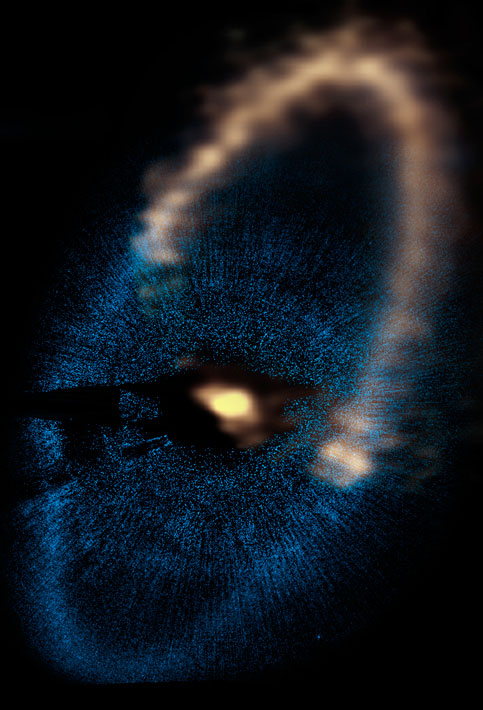ALMA Reveals Workings of Nearby Planetary System
| Science
A new observatory still under construction has given astronomers a major breakthrough in understanding a nearby planetary system that can provide valuable clues about how such systems form and evolve. The scientists used the Atacama Large Millimeter/submillimeter Array (ALMA) to discover that planets orbiting the star Fomalhaut must be much smaller than originally thought.

The narrow dust ring around Fomalhaut. Yellow at top is the ALMA image, and the blue at bottom is Hubble Space Telescope image. The star is at the location of the bright emission at the center of the ring.
CREDIT: ALMA (ESO/NAOJ/NRAO). Visible light image: the NASA/ESA Hubble Space Telescope A.C. Boley (University of Florida, Sagan Fellow), M.J. Payne, E.B. Ford, MShabran (University of Florida), S. Corder (North American ALMA Science Center, National Radio Astronomy Observatory), and W. Dent (ALMA, Chile), NRAO/AUI/NSF; NASA, ESA, P. Kalas, J. Graham, E. Chiang, E. Kite (University of California, Berkeley), M. Clampin (NASA Goddard Space Flight Center), M. Fitzgerald (Lawrence Livermore National Laboratory), and K. Stapelfeldt and J. Krist (NASA Jet Propulsion Laboratory)